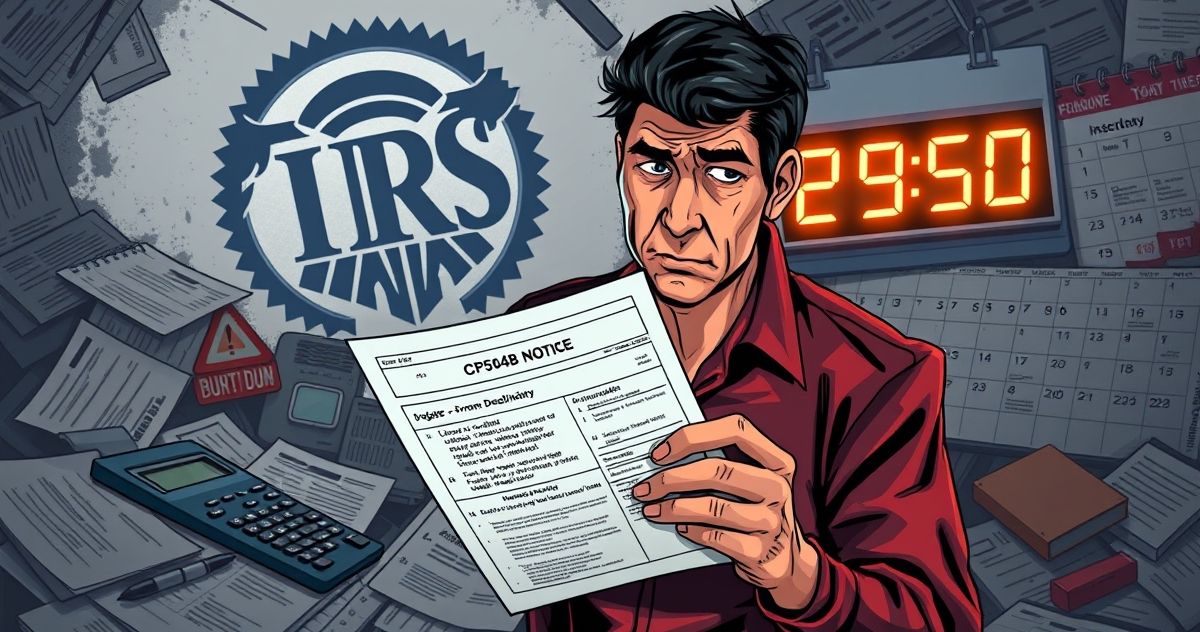Understanding the CP504B Notice
The CP504B Notice is a critical document issued by the Internal Revenue Service (IRS) when a taxpayer has outstanding federal tax liabilities. This notice serves as an urgent reminder that immediate action is required to settle unpaid taxes. The CP504B Notice, sometimes known as the ‘Intent to Levy’ notice, indicates that the taxpayer’s situation has moved into a more serious phase of collection. Here’s a comprehensive look at what the CP504B Notice is, its features, and what taxpayers should do upon receiving it.
What is the CP504B Notice?
The CP504B Notice is sent by the IRS to inform taxpayers that federal taxes are owed and have yet to be paid despite previous notices. This notice itself is more severe than preliminary reminders, such as the CP501 or CP503. Unlike earlier communications, the CP504B implies that levies or liens on assets, wages, or bank accounts might be initiated if the balance is not settled promptly.
Primary Purpose
The main purpose of the CP504B Notice is to urgently draw the taxpayer’s attention to unresolved tax obligations, highlighting the seriousness of the situation. By issuing this notice, the IRS makes it clear that it is considering enforced collection actions unless the taxpayer responds. This serves as a final reminder of the consequences of not resolving overdue taxes and urges the taxpayer to comply with tax payment requirements swiftly.
Key Features of the CP504B Notice
- Amount Owed: The notice will specify the total amount owed, which includes taxes due, interest accrued, and any applicable penalties. It gives a breakdown reflective of the taxpayer’s current obligations.
- Interest and Penalties: The notice explicitly details the interest charges and penalties levied on the unpaid tax amounts. Since interest continues to accrue until the debt is paid in full, taxpayers are encouraged to settle their dues swiftly.
- Payment Instructions: Clear instructions on how to pay the owed amount are included within the notice. Multiple payment methods, such as online payments, direct transfers, or checks, are generally available to accommodate taxpayer preferences.
- Finality Before Levy Action: This notice serves as a ‘final notice’ regarding a potential levy action. The IRS indicates that if the taxpayer does not act, they risk having a levy placed on their bank accounts or wage garnishments executed.
- How to Dispute: If the taxpayer believes the IRS has made an error, the notice includes directions on how to dispute the claim. Providing supporting documentation against the owed sum is essential.
Filing or Compliance Requirements
Upon receiving a CP504B Notice, taxpayers need to assess their financial situation and take appropriate action as quickly as possible. It is imperative to address the notice immediately by either paying the amount due using specified payment methods or contacting the IRS to arrange for a payment solution. Taxpayers may qualify for installment agreements or compromise options, subject to eligibility criteria being satisfied. Furthermore, if disputing the notice, ensuring timely and thorough submission of correct documentation is paramount.
Penalties and Consequences of Non-Compliance
Failing to respond to or act on a CP504B Notice has serious consequences. The IRS might proceed with collecting owed sums through levies and garnishments. These financial hammers can severely hinder cash flow and create additional financial burdens. Continued non-compliance may result in aggravated penalties and interest charges, exacerbating the taxpayer’s debt situation further. Additionally, disregarding such notices amplifies the risk of more intrusive collection actions, creating legal and financial complications.
Importance of the CP504B in Tax Resolution
The CP504B Notice plays a central role in ensuring federal tax compliance. By serving as a strong prompt to resolve outstanding tax obligations, it motivates taxpayers to clear their balances before harsher actions are taken. Complying with notice requirements enables taxpayers to avoid enforced collection actions and settle their fiscal relationship with the IRS efficiently. Furthermore, resolving these issues positively impacts the taxpayer’s financial health and credibility by preventing the escalation of penalties and maintaining access to their financial resources.
Ignoring a CP504B Notice not only complicates tax matters but could impact the taxpayer’s creditworthiness and financial freedoms. It is crucial to treat such communications with due diligence and take the necessary steps to resolve any discrepancies with the IRS officially and legally. By taking a proactive approach, taxpayers can steer clear of IRS enforcement actions and potentially save on additional costs related to their tax obligations.

